Tag Archives: Chinook salmon
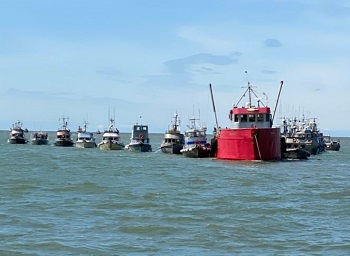
2020 commercial salmon catch, and value took a dive
Commercial salmon harvests proved challenging for the 2020 season, challenged by a global pandemic of the novel coronavirus, with the overall fish catch and its value down considerably from a year earlier. Data released on Monday, Nov. 9 by the Alaska Department of Fish and Game, said the all species harvest has an approximate value of $295.2 million, down 56 percent from $673.4 million in 2019. Fishermen delivered some 116.8 million fish, a 44 percent drop from the 208.3 harvested a year earlier, the report said. >click to read< 18:15

Government of Canada takes action to address threats to struggling Fraser River Chinook
Today, (June 19, 2020) Fisheries and Oceans Canada is releasing 2020 Fisheries management measures that will support the recovery of at-risk Fraser River Chinook populations, as well as protect the jobs and communities that depend on Chinook. The 2020 measures include additional restrictions to strengthen conservation as well as the flexibility needed where impacts to stocks of concern will be very low. These measures were developed following consultation with Indigenous communities, recreational and commercial fishing organizations, and environmental organizations. These measures are one component of a larger strategy intended to place at-risk Pacific salmon populations on a path towards sustainability. >click to read< 11:49
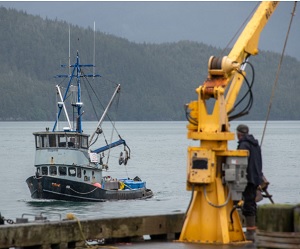
Copper River fishermen gain another harvest
Commercial harvesters keen on those Copper River salmon got a fifth shot at those prized Chinooks and reds on Thursday, June 18, in a 12-hour opener announced by Alaska Department of Fish and Game officials in Cordova. Waters within the expanded Chinook salmon inside closure area were closed for the period. It has been, in no uncertain terms a real slow start, with several of those openers already cancelled because of a very slow run. Through Tuesday, June 16, a total of 1,665 deliveries to processors from four 12-hour openers in the Copper River had brought in some 5,751 kings, 71,370 sockeyes and 1,056 chums, a total of 78,177 fish. >click to read< 16:01

Judge weighs shutting down Southeast Alaska Chinook fishery
Fishermen in Southeast Alaska could see their season cut short if a federal judge issues an injunction requested by a Washington environmental group to protect the food supply of a subpopulation of orcas. The Wild Fish Conservancy filed a lawsuit against NOAA,,, “We are getting blamed for harvesting their food source, which really isn’t the cause of the problem,” Amy Daughery, executive director of the Alaska Trollers Association said. “The problem as we see it, is the exponential population growth in Seattle, which has lead to a lot of toxicity and pollution and habitat loss in that area. And so these whales are really struggling, this one population. The Northern killer whales that we see off the coast of Southeast Alaska are doing very well. In fact they’ve increased.” >click to read< 10:19

Destroying a fishery will not save Southern Resident Killer Whales – Scientists say feed starving whales farmed salmon
In less than two weeks, a Seattle-based federal judge will decide the fate of some 1,600 Southeast Alaska salmon trollers—fishermen who are already looking at the lowest allotment of Chinook in 20 years, largely due to the past three Pacific Salmon Treaty agreements that have cut, by two-thirds, their allocation of these high-value, sought-after fish. If you haven’t been following the trade press or Alaska media in the past few weeks, you may not know that this group of largely rural Alaska fishermen are today facing the unthinkable: being put out of business—collateral damage as the result of a lawsuit filed by a Washington state-based NGO, the Wild Fish Conservancy (WFC), against the National Marine Fisheries Service (NMFS). In the lawsuit, WFC seeks a Preliminary Injunction to stop the Southeast Alaska summer troll fishery, alleging that NMFS has failed to allow enough king (Chinook) salmon to return to Puget Sound to feed endangered Southern Resident Killer Whales,,, >click to read< 08:16
Feed starving whales farmed salmon, say scientists – “You could use well boats to deliver the farmed fish to where the whales feed.” >click to read<

Suit targets Alaska salmon management to protect southern killer whales
The Wild Fish Conservancy filed notice on January 9, stating its intentions to sue the National Marine Fisheries Service for violating the Endangered Species Act, and jeopardizing the existence of Southern Resident Killer Whales. The Conservancy argues that an important food supply of the whales, endangered stocks of chinook salmon originating in Puget Sound, the lower Columbia River, the Willamette River, and Snake River is being depleted by the commercial troll and sport harvest in Southeast Alaska. >click to read< 20:51

Chinook Salmon Return to a Revitalized San Joaquin River
A staggering number of Chinook salmon are returning to a California river that hasn’t sustained salmon for decades due to agricultural and urban demands, giving biologists hope that threatened fish are finally spawning in their native grounds without human help. Officials working on a restoration program announced Tuesday that they have counted a record number of spring-run Chinook salmon fish nests (redds) so far this fall on a stretch of the San Joaquin River near Fresno. >click to read< 13:02

California king salmon rebounds after drought
Reeling in a fish “feels good every time,” but this year has been surprisingly good,,, Commercial salmon catches have surpassed official preseason forecasts by about 50%, said Kandice Morgenstern, a marine scientist with the California Department of Fish and Wildlife. Harvests have been particularly strong in Morro Bay, Monterey and San Francisco, but weaker along California’s northern coast. This year’s adult salmon are the first class to benefit from record rainfall that filled California rivers and streams in early 2017, making it easier for juvenile chinook to migrate to the Pacific Ocean, where they grow into full-size fish. Photo’s, >click to read< 09:50

California coasts recovering, but more marine heatwaves like ‘The Blob’ expected
The effects of the marine heatwave off the California coast from 2014 to 2016, better known as The Blob, that led to a decrease in Chinook salmon and virtually shut down the Dungeness crab industry are finally starting to wear off.,,, “It wasn’t about (a lack of) abundance,” said Noah Oppenheim, executive director of the Pacific Coast Federation of Fishermen’s Associations. “It was about destabilized ecosystems.” >click to read< 10:50
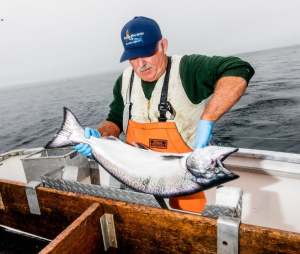
After yearslong shortfall caused by drought and environmental restrictions, California Is Overflowing With Salmon
The phones began ringing at Giovanni’s Fish Market & Galley a week after salmon season opened in May and have barely let up since. “It’s all day, every day,” said Giovanni DeGarimore, the owner.,,, “You can plan for bad years, but it’s hard to navigate when you’re totally closed,” said Lori French, wife of a commercial fisherman who has permits for both crab and salmon. But then the salmon season opened on May 1. “This is a ‘Thank you, Jesus’” moment, Ms. French said over a salmon lunch on the waterfront one day in mid-June, as her husband was out at sea. >click to read<09:31
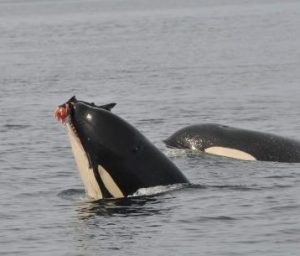
Environmental groups sue to restrict salmon fishing for Northwest orcas
The Center for Biological Diversity, which filed a lawsuit nearly two decades ago to force the U.S. government to list the orcas as endangered, and the Wild Fish Conservancy asked the U.S. District Court in Seattle on Wednesday to order officials to reconsider a 2009 finding that commercial and recreational fisheries did not jeopardize the orcas’ survival. >Video, click to read<10:09

West Coast Fishermen cautiously optimistic for strong salmon season
After three difficult years when Chinook salmon population numbers were down and fishing opportunities were limited, commercial fishermen are hoping that the upcoming season will be better. “What we’re seeing is a better forecast of salmon in the ocean this year than we saw last year,” said Harry Morse, public information officer for the California Department of Fish and Wildlife, following a meeting with about 85 commercial and recreational anglers on Wednesday in Santa Rosa. “We’re cautiously optimistic.” >click to read<10:31

Northwest Dams to Spill More Water to Help Salmon & Orca
Dam operators will send more water spilling over the eight dams along the Snake and Columbia rivers in an effort to help young salmon survive the notoriously deadly trip to the Pacific Ocean. The spill management plan for 2019 and 2020 is a win for salmon advocates in a 17-year legal battle where federal judges have repeatedly told the government it’s not doing enough to prevent the extinction of salmon in the rivers of the Northwest. It also brings that litigation into alignment with the work of a Washington state task force determined to prevent the extinction of Southern resident killer whales whose survival depends on endangered Chinook salmon. >click to read<12:03

Expert skeptical of Washington state’s orca-saving proposal
“The question is: What’s the problem and what’s the solution?” Ray Hilborn told KIRO Radio’s Dave Ross. “And I have to say, I’m a bit skeptical about much of the discussion that has been raised.” Hilborn is a professor of fisheries and aquatic sciences at the University of Washington. There are many reasons for his skepticism, but a big part of it is that the conversation around the problem has missed the mark on many key points. “It’s almost certainly multiple causes for the decline of Southern Resident Killer Whales, but what I haven’t heard in the discussion is pointing out that Northern Resident Killer Whales, which also depend on Chinook salmon, are doing just fine. There are probably 5-6 times more of them than the Southern residents. Audio report, >click to read<17:47

Orcas, fishermen are both endangered species
Orcas and commercial salmon fishermen share a common crisis — both need more adult Chinook salmon to return to the Columbia River; orcas to avoid starvation, fishermen to sustain their livelihoods and families. Northwest orcas are starving and their population is declining — only 74 remain, in large part because their primary prey, Chinook salmon, have been pushed by dams, dewatering and habitat destruction to near extinction almost everywhere.,, Salmon fishermen too are now effectively an endangered species, and for the same reasons as orcas — their Chinook salmon prey. <click to read<

Fishermen, scientists, researchers convene to address reeling coastal communities, fisheries
Commercial fishing fleets are skeletons of their former selves and their communities, once known for their abundant natural resources and food production, are suffering from increased poverty and food insecurity. In response, about 50 state and local officials, scientists, researchers, business owners and fishermen convened Friday, Oct. 5, for a ‘Fisheries Roundtable’ discussion at the Columbia Pacific Heritage Museum in Ilwaco. They explored options to improving coastal fisheries and the communities they serve. >click to read<16:17

Protesters call for end to Chinook salmon fishing to save endangered orcas
Demonstrators concerned about the fate of the endangered southern resident killer whale population are calling for an end to all commercial fishing of Chinook salmon. There are just 74 of the southern residents remaining, and scientists say a lack of their primary food source, Chinook, is one of the key threats to their survival. On Wednesday, about a dozen protesters descended on Minister of Fisheries and Oceans Jonathan Wilkinson’s North Vancouver constituency office to call for change. Shirley Samples argued the government needs to ban all commercial and recreational Chinook fishing. “Why don’t we subsidize these fishermen? Why don’t we give them money so they can make it through this time when they have to forfeit fishing? There is a solution,”>click to read<10:20

Impossible Choices: The Complicated Task of Saving Both Orca and Salmon
Decades of politics and foot-dragging have stymied the recovery of threatened and endangered Chinook salmon, while an iconic population of killer whales that depends on them veered toward extinction. Now, a last-ditch effort to save the whales may also be what thwarts the recovery of Chinook. The Southern Resident killer whales are dying. An extended family of 75 orcas living year-round in the sea surrounding the San Juan Islands near Seattle, their numbers never fully rebounded since aquariums that later became SeaWorld captured a third of them in the late 1960s. And there are other culprits. Cargo ships and whale-watching boats zip through the Salish Sea, adding noise that interferes with the whales’ ability to locate each other and their prey. The water they live in is toxic. The Puget Sound outside Seattle is tainted with flame retardant, and PCBs and pollutants gush from nearby rivers into the sea. >click to read<10:13
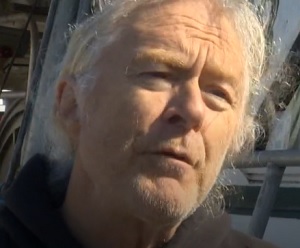
Fishermen concerned about salmon boycott at Seattle restaurants
There is new concern about the impacts restaurants may be having on the commercial fishing industry as a growing number of Seattle chefs decide to remove Chinook salmon from their menus to help rebuild the fish population and save the orcas.,, But many are concerned the boycott is counterproductive. Pete Knutson, a long-time commercial fisherman and commissioner of the Puget Sound Salmon Commission, points out that most of the Chinook that end up on restaurant menus are harvested after they’ve already passed through the areas where the orcas feed. Video >click to read<11:18

Giving up Chinook Is a Nice Idea but It Will Not Save the Orcas
The Seattle Times published a heart-warming/heart-breaking story Wednesday about chef Renee Erickson, who recently announced that she will be yanking Chinook salmon from her restaurant menus in response to Tahlequah, aka J35, the Salish Sea orca who became an international cause célèbre after carrying her dead baby for 17 days. “It’s sad,” Erickson told the Times. “I love eating [chinook], and I grew up catching it.” But, she added, “The biggest gut wrench is that we have starving orcas. We are eating the salmon they need to eat.”,, Taking chinook off restaurant menus (and your own shopping list) is a commendable action. But, unfortunately, it won’t save the whales. It’s kind of like every other environmental crisis: >click to read<09:59

Salmon decline reveals worrisome trend
The sad story of an orca carrying her dead calf for 17 days off the Washington coast this month has garnered global attention to the plight of killer whales in the region. It has also highlighted the steep decline in the region’s salmon stocks, the resident orcas’ sole food source. ,, That is because the availability of Pacific Ocean salmon has been trending low for the past decade. The total pounds of chinook salmon caught off the Oregon coast in 2017 fell 40% compared with the year before, according to Oregon Department Fish & Wildlife (ODFW) data. Between 2014 and 2017, total pounds caught dropped 80% and the value of the catch dropped 72% to $5 million. Drought in California and nutrient-starved ocean conditions are blamed for the decline. >click to read<16:15

Southeast Alaska commercial troll summer king season opens July 1
Southeast Alaska’s commercial salmon trollers open their summer season for king salmon July 1st with a harvest target of 53,800 Chinook. The fleet is expected to catch that in a short opening. That’s after low catches and restricted fishing for kings this spring. The first summer opening is expected to last four or five days and will be managed in-season. That means the Alaska Department of Fish and Game will announce a closure once the catch nears that harvest target. Grant Hagerman is the department’s troll management biologist for Southeast and says fishing in the spring season has been slow. Audio report, >click to read<17:06

Save salmon; kill sea lions
Another spring, another much anticipated migration of “Kings of the Columbia,” our Pacific Northwest’s most revered salmonoid, the chinook salmon. Or perhaps not. At one-time chinook and their cousins migrated upstream by the hundreds of thousands. No longer. Salmon and steelhead are on the fast track to becoming endangered species. The Columbia River has its problems when considering fish migrations. The dams, commercial transportation, irrigation demands, you name it. These problems are solvable, but it will take time. There is now one glaring problem that can be simply and quickly resolved. >click to read<15:05

Governor-Led Orca Recovery Effort to Hold First Meeting on Tuesday
An orca conservation team convened by Gov. Jay Inslee is holding its first meeting on Tuesday. The Southern Resident Killer Whale Recovery Task Force will focus on ways to help the Northwest’s iconic species. Stephanie Solien, who is co-chairing the Task Force, says many of the remaining orcas are in bad shape. She says the Task Force will focus on three of the well-known threats to the whales. Solien says conservation will be a statewide effort, especially when it comes to saving the chinook salmon the whales feed on. Watch out! >click to read<14:23

Oregon Fish and Wildlife commissioners back gillnetters
The Oregon Fish and Wildlife Commission is again pushing for commercial salmon fishermen to get time on the Columbia River. Oregon and Washington state adopted a policy nearly six years ago to slowly phase gillnetters off the river’s main stem, but Oregon has second-guessed the wisdom of the decision. The five commissioners at a meeting in Astoria on Friday said they supported looking into a summer Chinook salmon season for gillnetters — something they attempted to do last year. Commissioners walked back that move, however, after Gov. Kate Brown instructed them to align with her administration and Washington state. >click to read<21:04
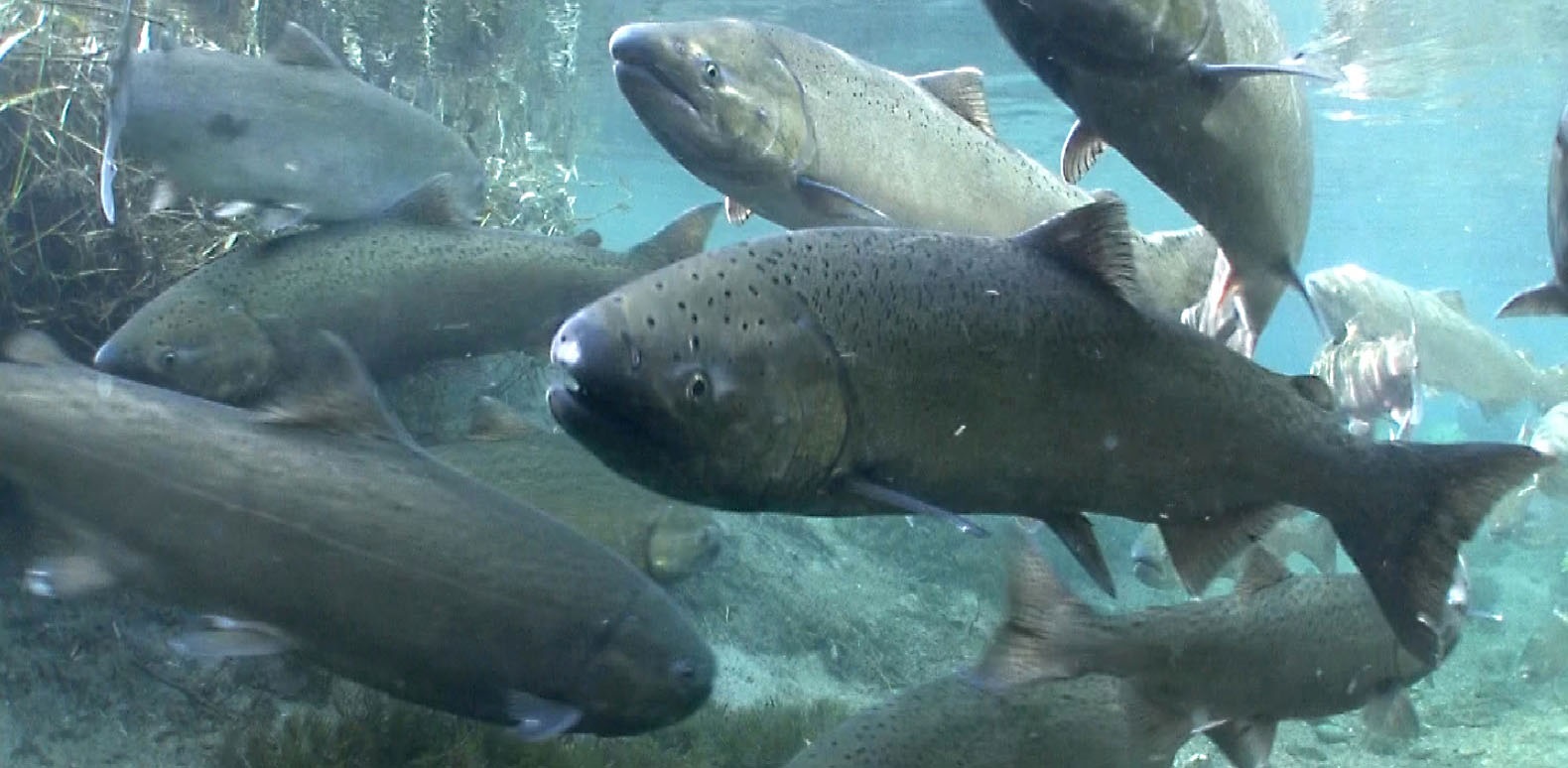
Commercial fishermen hit hard by king cuts
Commercial king salmon fishermen will have a tough time making ends meet this summer. The all-gear harvest limit for Chinook salmon — the pot of king salmon divided between gear groups in Southeast — is about 40 percent smaller this year, the Alaska Department of Fish and Game announced Wednesday. The reduction, from nearly 210,000 fish in 2017 to 130,000 in 2018, is based on an index of the abundance of fish ADFG expects to spawn on Southeast and transboundary rivers this summer. ADFG is expecting record-low returns of king salmon,,, >click to read<10:36

California’s Salmon Industry Set to Take Another Hit
Fisheries managers will impose the toughest restrictions on California’s salmon harvest in nearly a decade, hobbling the billion-dollar industry that depends on it. This year’s fall salmon run is estimated to be only a quarter of normal on California’s Sacramento River, due mostly to drought conditions and warmer ocean temperatures. As a result, officials at the Pacific Fishery Management Council last week moved to cut the commercial season by as much as a third of its standard length. >click to read< 10:42













































